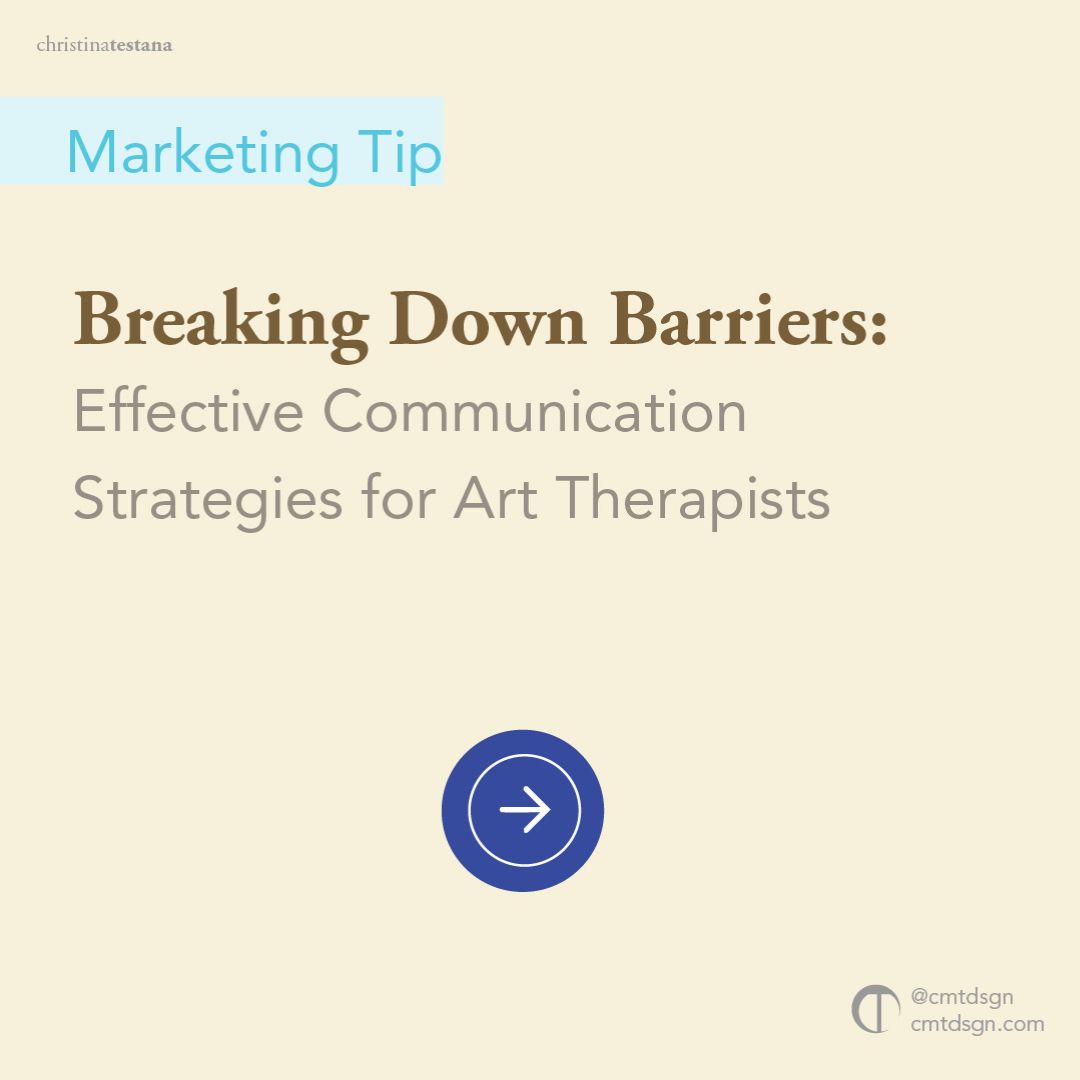Do you ever find yourself desiring for deeper connections and communication with your clients, to truly understand and make a lasting impact on their lives?
You strive to make peoples lives better and the best way to start is through communication. This can be from a marketing or art therapy session perspective. The overall importance of communication is the gateway to receiving opportunities, leads and connections.
Communication is where we start to build relation, trust and mutual understandings to get to the next stage or say yes to something. We need to remember that it’s not about just getting that sale, it’s about the long-term relationship. How can you be helpful to this person through communication and deliver the best results for them to stick with you for the journey. Communication will do just that.
We cognitively get too caught up in our minds about just reaching the highest amount of followers or that revenue goal. The whole idea is about quality and not quantity. You must use communication as a the source of building good quality relationships that stick with you long-term.
In today’s world given the new digital technology of phones and social media. We lack the human connection and basic socialization. Now it’s creating barriers for trying to build mutual understanding between two people. On top of trying to be more inclusive as a society, communication in all formats is crucial to the needs of everyone including the minority. I am going to share with you a few effective communication strategies to build a bridge between you and the client, so that you can meet in the middle.
Understanding Communication Challenges in Art Therapy
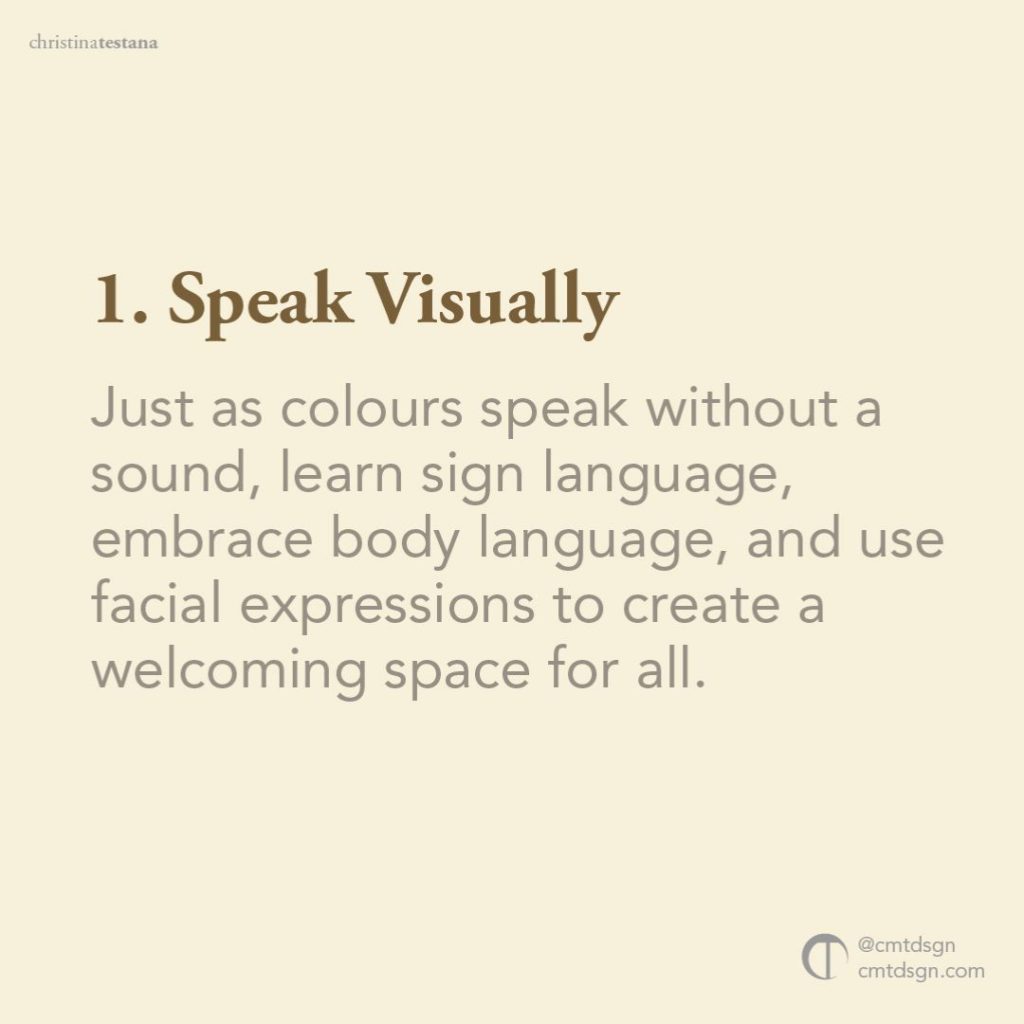
Non-Verbal Communication
There is an emphasis in society around inclusiveness and accessibility. As an art therapy brand it’s important to be aware of these new thoughts and incorporating them into your business. It would be ideal to learn and understand sign language that way in connections you are more fluid in other forms of socializing.
The impact of body language and gestures really help to get your message across or tell a story. Even the use of facial expressions within sessions is effective especially for the deaf community. In terms of inclusivity I would make time to learn and understand their headspace and using your body language, gestures and facials expressions to create a warm and welcoming environment.

Language and Cultural Barriers
I experienced something very unique in my creative business, I had an art therapist reach out to for design work but she only knew french. My french was super rusty and unfortunately I had to decline the job because of this barrier.
In your art therapy business, depending on your ideal client it would be essential to try an learn the major languages around the world. This is another way to lift any language barriers thats are preventing you from gaining opportunities.
Another important point to mention is about cultural diversity and educating yourself around these various cultures, histories, traditions and beliefs. This will help to keep an open mind when marketing or working with clients to remove any stereotypes.
Keep the following in mind:
- Avoiding Assumptions: It is essential to avoid making assumptions about a client’s cultural background or experiences. Instead, therapists should encourage clients to share their unique perspectives and experiences through art.
- Language and Communication:
Language barriers can hinder effective communication. Art therapists should be sensitive to language differences and be prepared to use interpreters if necessary. Additionally, using art as a universal language can bridge communication gaps and allow clients to express themselves comfortably. - Symbols and Meanings:
Different cultures attribute various meanings to symbols and colours. Art therapists should be aware of these variations to interpret and understand the artwork accurately. - Art Materials and Techniques:
Certain art materials or techniques may hold specific cultural significance or taboos. Being aware of these cultural sensitivities helps art therapists avoid using materials that may be uncomfortable or offensive to clients. - Respect for Taboos and Traditions:
Some cultures have strict taboos or traditions related to specific imagery or art forms. Art therapists should respect these cultural boundaries and avoid encouraging clients to create art that goes against their cultural beliefs. - Non-Directive Approach:
Adopting a non-directive approach in art therapy allows clients to express themselves in ways that align with their cultural norms and preferences. Therapists should avoid imposing their cultural beliefs on the creative process. - Flexibility and Adaptability:
Art therapists must be flexible and adaptable in their approaches to accommodate cultural differences and unique needs. A one-size-fits-all approach is not suitable for a diverse and inclusive society. - Building Trust and Connection:
Developing a strong therapeutic alliance with clients is essential in art therapy. Building trust and connection with culturally sensitive and empathetic communication enhances the therapeutic process. - Reflecting on One’s Own Cultural Biases:
Art therapists should regularly self-reflect on their own cultural biases and assumptions. Being aware of personal biases helps avoid unintentional cultural insensitivity.
Effective Communication Strategies for Art Therapists
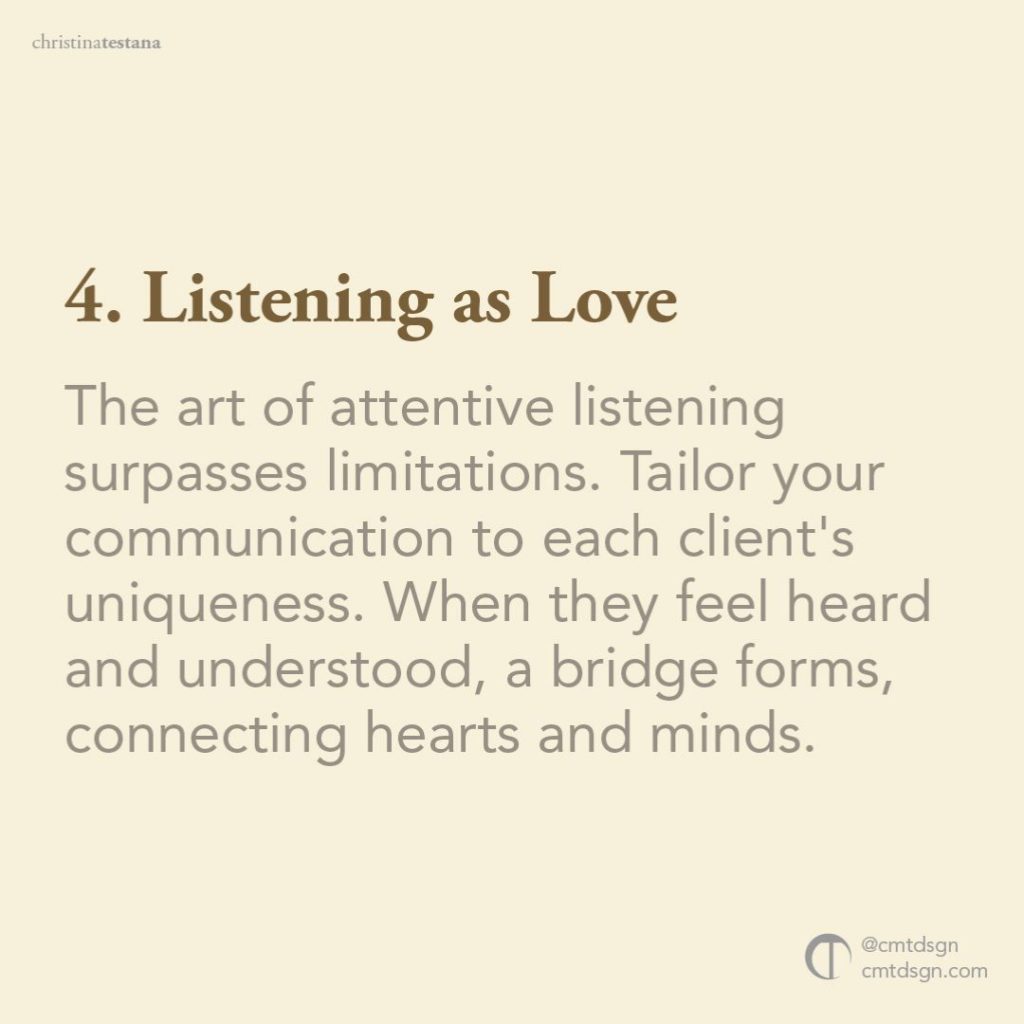
Active Listening Techniques
Whether in-session or out-of-session, it’s a must to establish active listening techniques to clear any communication barriers. This technique helps to learn about the needs of the client and understand what is essential to them, that way you can cater the sessions to their specifications. They will feel much more comfortable when you think about the client first and not so much about actual work. Clients want to be heard, seen and feel understood.
In best practice, any socializing you do with your clients always repeat what you heard from the client in your own words back to them. This confirms that both you and the client are on the same page and share a mutual understanding. Doing this will create trust and a connection through these listening skills. Keep this in mind whenever interacting with leads or your audience. The better you are with listening the better you will receive.
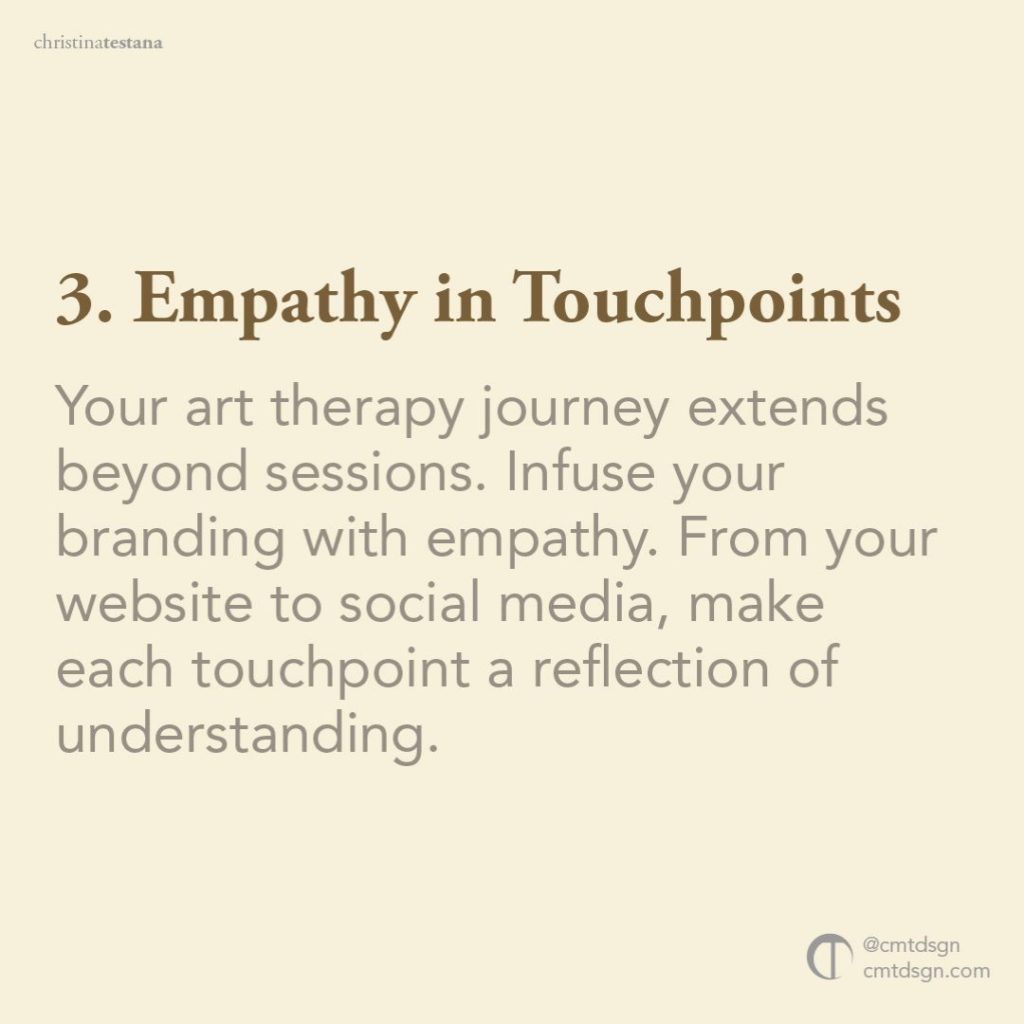
Empathic Communication
Empathy in an art therapy brand is essential for building long-term relationships in and out of session. Any touch point that your ideal client interacts with needs to show empathy. Touch points mean your website, flyers, copy, imagery and social media post anything that the ideal client would engage with. Empathy needs to be shown, or voiced out. You can’t only leave it in session you have to radiate this out to your website copy, imagery, colours, content etc. they all are ways to connect with you before saying yes to you.
Empathy comes from a place of understanding ones emotions and view points, its essential to identify the specific person you are hear to help. Get into their headspace and understand what their going through via experiences or perspectives to communicate the most effectively. Key areas to look at to develop empathy in your art therapy brand is to understand the clients emotions, perspectives and experiences. This will give you the stepping stones to create communication that connects.
Incorporating empathic communication into your art therapy brand not only enriches the therapeutic relationship but also enhances the efficacy of the therapeutic process. Through the genuine connection formed via empathy, clients are more inclined to explore their feelings, gain insights, and find healing through creative self-expression.
Building Positive Change in Art Therapy Business
Building Positive Change in Art Therapy Business
This section dives into the strategies and practices that contribute to building a thriving art therapy business. Effective communication is a fundamental pillar, ensuring strong client relationships, successful group interactions, and overall growth.
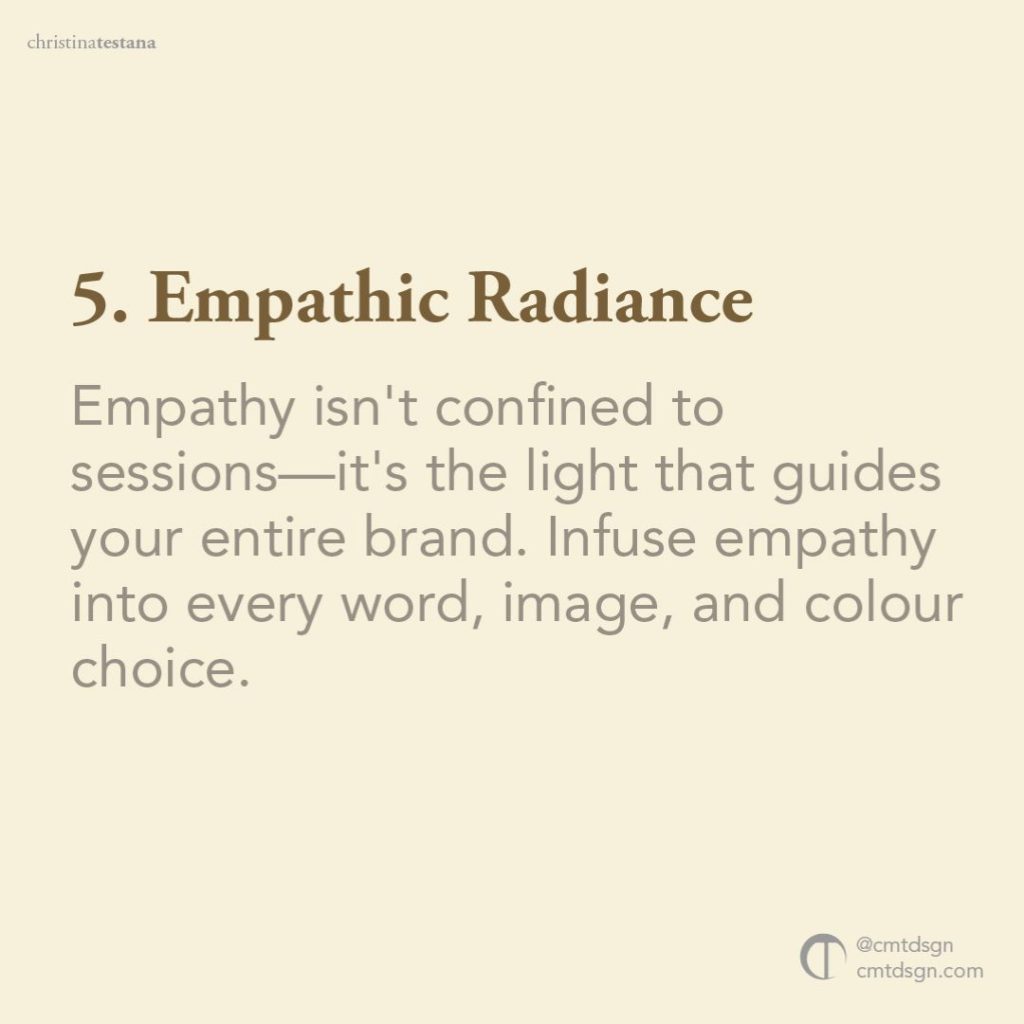
Client-Centered Approach
The emphasis here is building a client-centered art therapy brand, which means the branding will involve placing the needs, preferences, and experiences of your ideal client at the forefront of your brand strategy. It will prioritize understanding their backgrounds, preferences, and goals to connect with your ideal client on a deeper level to ensure it resonates with them and meet their expectations.
This personalized approach not only enhances the therapeutic experience but also amplifies client satisfaction and retention, ultimately driving positive change within the business. Here’s how to implement a client-centered approach in branding:
- Tailoring Communication to Individual Clients’ Needs
Effectively communicating with clients requires a flexible approach that considers their personalities, communication styles, and comfort levels. This involves active listening, adapting language and tone, and using the right therapeutic interventions based on individual preferences. You then create an environment in which clients feel seen, heard, and understood. - Enhancing Client Satisfaction and Retention
Given this personalized approach to therapy services, there is a higher client satisfaction rate. Where clients are more likely to continue their therapy journey and recommend services to others. Continuously practicing strong communication in building trust and rapport, will help you keep clients and grow a customer base. Additionally, it explores strategies for maintaining open lines of communication, addressing concerns, and consistently demonstrating a commitment to clients’ well-being.
Effective Communication in Group Art Therapy
Group art therapy presents unique challenges and opportunities for communication. This dives into how therapists can build effective communication within group settings to create a supportive and enriching environment.
- Facilitating Group Discussions and Interactions
Group art therapy involves managing diverse personalities and ensuring that all participants have a chance to express themselves. This can be challenging in trying to create a collaborative environment where everyone is in harmony with each other. It’s ideal to explore techniques for guiding group discussions, managing conflicts, and encouraging collaboration among participants. Effective communication ensures that each individual’s voice is heard and respected without showing any bias. The goal is to create an open space for expression. - Fostering a Supportive Environment through Communication
Speaking of safe space, you are positioning yourself as a harmonizer. Building a sense of community and support within a group is essential for therapeutic progress. I encourage you to look at strategies for building empathy, active listening, and validation within the group. Through clear and compassionate communication, therapists can create an atmosphere where participants feel safe to explore their emotions and experiences together.
Art Therapy Documentation and Feedback
Building a brand requires constructive criticism and taking notes of all clients interactions in and out of sessions. Not only that, ask them about different areas in your business, from services, content, to social interactions. Ensure you document and take notes of all these points.
Clear documentation and constructive feedback are crucial components of a well-organized art therapy practice and have a good understanding of your people. Below highlights the importance in tracking progress and promoting positive change.
- Importance of Clear and Detailed Documentation
Proper documentation ensures accurate records of client sessions, interventions, and progress. The significance of maintaining organized and thorough documentation, which helps in providing effective care, collaborating with other professionals, and demonstrating accountability. I always use Notion for all my client interactions and note taking that way is all in one place and I don’t have papers all over the place. Create an internal system that will help you get from point A to B in the most effective way and document the progress of a client so no step is missed. - Providing Constructive Feedback for Client Progress
Feedback is a valuable tool for client and business growth. The relationship between therapist and client is a peer to peer support system. Clients are there to help you grow your business and better improve your system, where as you the therapists an deliver feedback that is both constructive and supportive to the client for making meaningful progress. Promoting an effective therapuetic journey.
In Conclusion…
In a world driven by digital technology, building genuine human connections has become more crucial than ever. Effective communication forms the foundation of these connections, especially in the realm of art therapy. As an art therapy professional, your goal extends beyond transactions or quick fixes—it’s about building meaningful, lasting relationships that contribute positively to your clients’ lives.
This journey begins with acknowledging the desire for deeper connections and understanding the impact you can make. Whether you’re engaging with clients from a marketing perspective or facilitating art therapy sessions, communication serves as the conduit for building relationships, trust, and creating mutual understanding. Remember quality over quantity, emphasizing the need to prioritize the individual and their unique journey.
Navigating challenges, such as language barriers and cultural diversity, requires a proactive and empathetic approach. By incorporating inclusive strategies like learning sign language, understanding cultural nuances, and breaking down language barriers, you show a commitment to creating an environment where everyone feels valued and understood.
Within the art therapy context, effective communication takes on various forms, each tailored to the client’s needs. From active listening techniques that ensure clients feel heard and acknowledged to empathic communication that resonates on a deeper emotional level, every touchpoint—whether in-session or through branding materials—serves to strengthen the connection between therapist and client.
In group settings, your role as a facilitator becomes even more dynamic. Guiding discussions, managing conflicts, and nurturing collaboration demand adept communication skills. Creating a supportive environment where participants feel safe to express themselves relies on your ability to build empathy, active listening, and validation.
Lastly…
The value of clear documentation and constructive feedback cannot be underestimated. These practices not only track progress but also contribute to positive change within your art therapy business. By maintaining organized records and providing thoughtful feedback, you nurture growth—both for your client’s therapeutic journeys and your own professional evolution.
In essence, effective communication serves as the thread that weaves connections, transforms lives, and builds a thriving art therapy practice. By embracing a client-centered approach, building empathy, and facilitating meaningful interactions, you’re not only practicing art therapy but also paving the way for deep transformation and lasting positive change.
